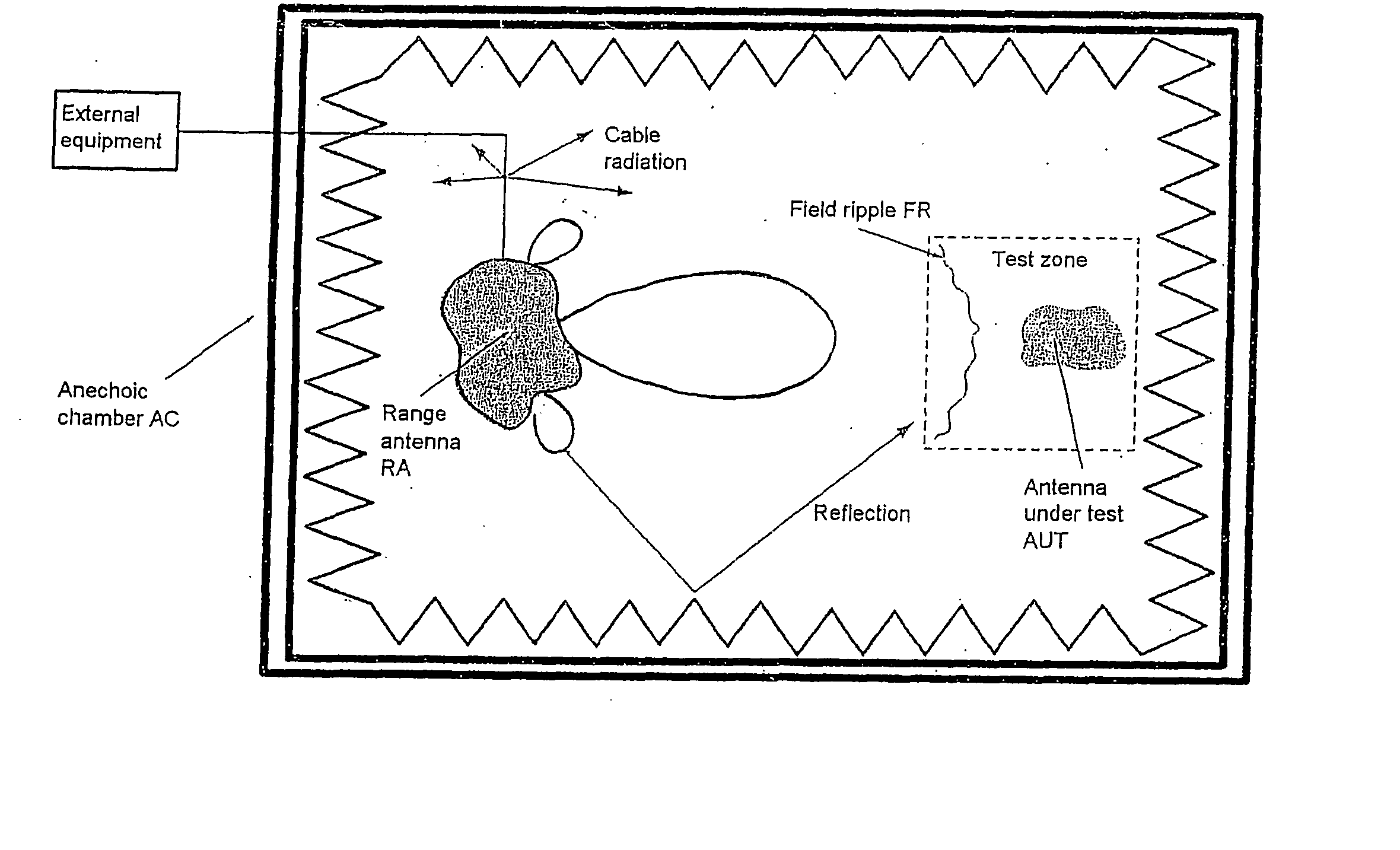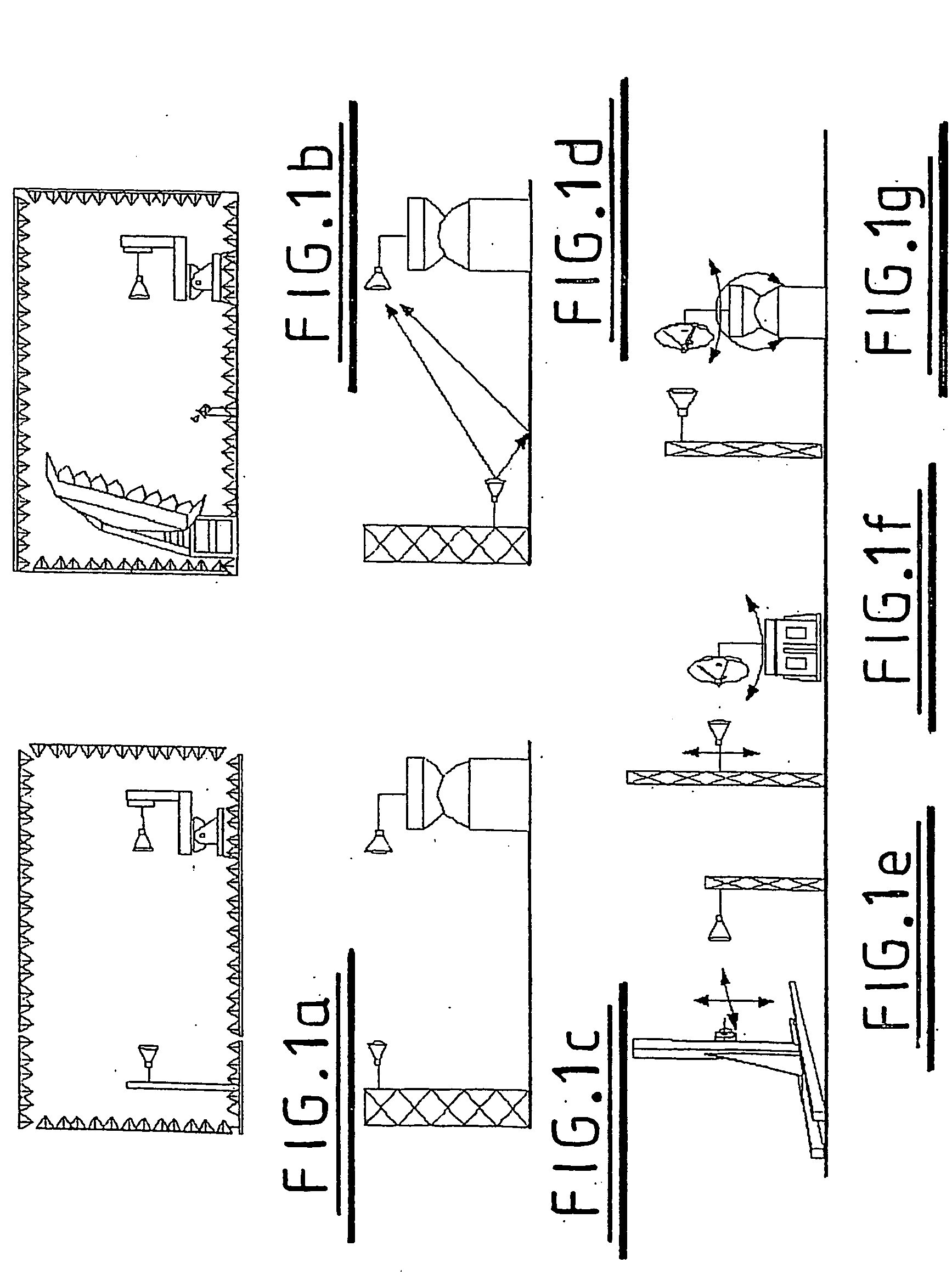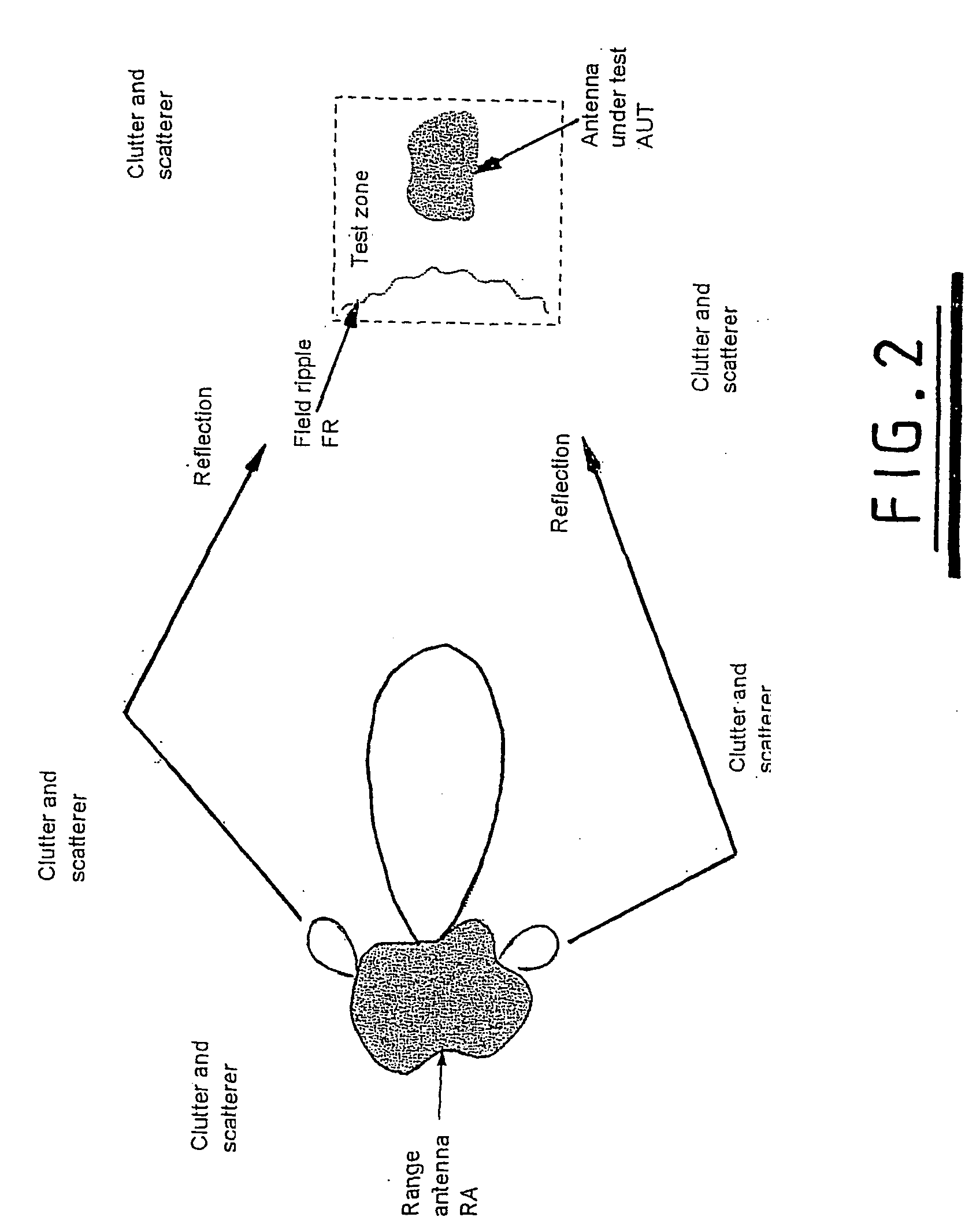Antenna measurement systems
a measurement system and antenna technology, applied in the field of antenna radiation pattern measurement, can solve the problems of minor distortion of the measured sidelobe structure, high and high cost of specialist design and construction skills, and achieve the effect of eliminating or reducing the cost of the antenna rang
- Summary
- Abstract
- Description
- Claims
- Application Information
AI Technical Summary
Benefits of technology
Problems solved by technology
Method used
Image
Examples
Embodiment Construction
[0060] The invention is applicable to existing indoor and outdoor measurement ranges and typical examples of these are described briefly hereinafter and in particular how the present invention is applied thereto.
[0061] Referring firstly to FIGS. 1a-1g. Seven commonly used antenna ranges are illustrated. They comprise a rectangular anechoic chamber (FIG. 1a), a compact antenna test range (FIG. 1b), an outdoor elevated range (FIG. 1c), a ground reflecting range (FIG. 1d), a planar near-field test range (FIG. 1e), a cylindrical near-field test range (FIG. 1f), and a spherical near-field test range (FIG. 1g). Save for the changes that application of the present invention has, their construction and how they are used to test antennas is not described in any detail as it is well known in the art.
[0062]FIG. 2 is a simplified two-dimensional representation of an outdoor antenna measurement range showing the range antenna RA and the measurement object or antenna under test AUT. In the test...
PUM
 Login to View More
Login to View More Abstract
Description
Claims
Application Information
 Login to View More
Login to View More - R&D
- Intellectual Property
- Life Sciences
- Materials
- Tech Scout
- Unparalleled Data Quality
- Higher Quality Content
- 60% Fewer Hallucinations
Browse by: Latest US Patents, China's latest patents, Technical Efficacy Thesaurus, Application Domain, Technology Topic, Popular Technical Reports.
© 2025 PatSnap. All rights reserved.Legal|Privacy policy|Modern Slavery Act Transparency Statement|Sitemap|About US| Contact US: help@patsnap.com



